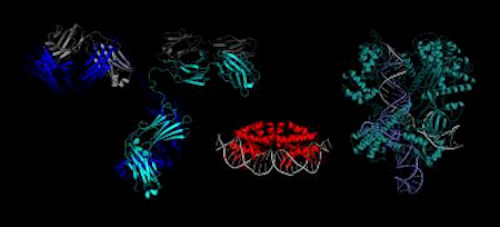September 4, 2020 -- Researchers recently reported that they were able to eliminate latent herpes simplex virus 1 (HSV-1) in mice using a new gene editing technique that targets the root cause of oral herpes. The findings were published on August 18 in Nature Communications.
Adeno-associated virus (AAV)-delivered meganucleases enabled efficient gene editing of the herpes simplex virus, eliminating about 90% of the virus in the superior cervical ganglia of mice. The research shines a light on the method's potential as a cure for oral herpes infection in humans, the researchers noted.
"The levels of HSV elimination observed in these studies, if translated to humans, would likely significantly reduce HSV reactivation, shedding, and lesions," wrote the group, led by Martine Aubert, PhD, of the Vaccine and Infectious Disease Division at Fred Hutchinson Cancer Research Center in Seattle.
Easy to spread and no cure
Globally, an estimated 3.7 billion people younger than 50 have oral herpes, according to the World Health Organization. The virus is spread most easily by close contact with a person who has an active outbreak or fever blister, and most people in the U.S. will contract it by age 20, according to the U.S. National Library of Medicine.

Patients may be prescribed antiviral medications for the condition. Prior to fluid-filled blisters or cold sores appearing on the lips and in the mouth, some people experience a sore throat, swollen glands, and painful swallowing, while others have no symptoms. Recurrent infections are triggered by many factors, including stress, fatigue, and hormonal or immune system changes.
Cure instead of control
The research is unique because it focuses on a cure for the highly contagious, lifelong virus, instead of suppressing its symptoms, explained senior author Dr. Keith Jerome, PhD, in a statement. The group used two sets of DNA scissors to target the virus, which lies dormant in the nerves of the face between outbreaks. The meganucleases were introduced into a mouse model of HSV-1 infection using an AAV vector.
The process renders the virus's DNA unrepairable and prevents reactivation, according to the researchers. Two gene-cutting proteins were used because the HSV DNA could be repaired in the infected cell with only one, they found.
The approach resulted in a 92% decrease in the virus DNA in the nerve tissue. The reduction remained for at least a month, indicating that the therapy would prevent the virus from reactivating.
Additionally, the researchers found that gene cuts with meganucleases were more efficient than with CRISPR-Cas9, which stands for clustered regularly interspaced short palindromic repeats and CRISPR-associated protein 9. CRISPR-Cas9 is a specific type of gene editing used to modify, delete, or correct regions of DNA.
The study did have limitations, such as the possibility that the "in vitro model systems may not fully recapitulate the state of viral latency achieved in vivo," the authors noted.
Further exploration
The results support the continued investigation of gene editing as a strategy against latent HSV infection, as well as other chronic infections such as HIV and hepatitis B.
"Further optimization of enzyme delivery and the meganucleases themselves are likely possible, and thus a cure for HSV infection may ultimately be within reach," they concluded.
Do you have a unique perspective on your research related to gene therapies or virology? Contact the editor today to learn more.
Copyright © 2020 scienceboard.net







